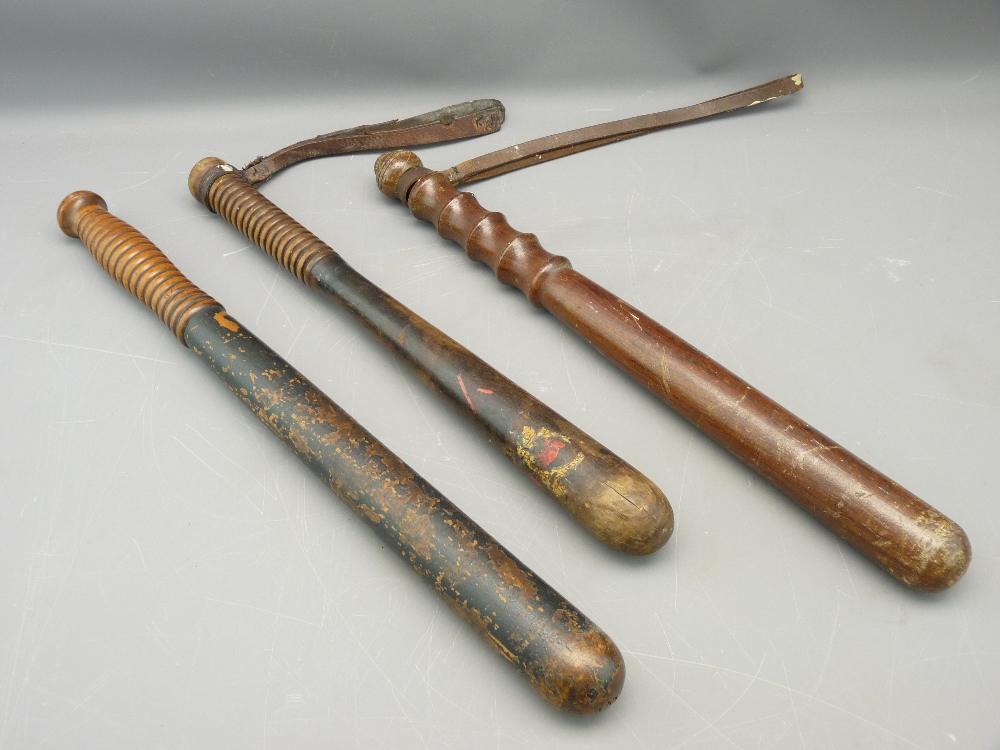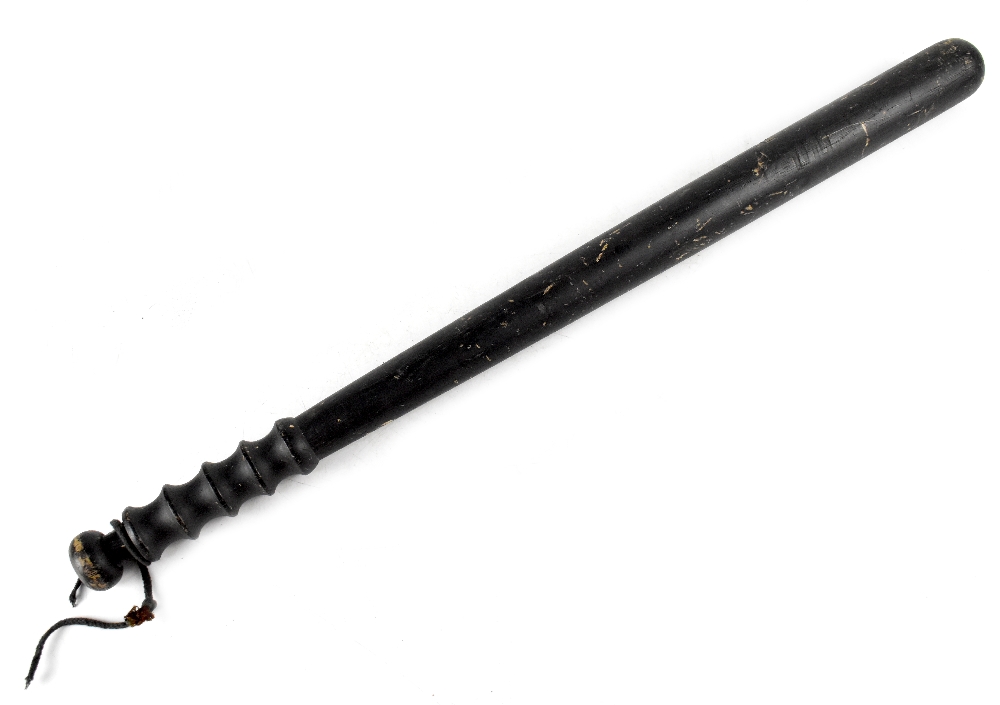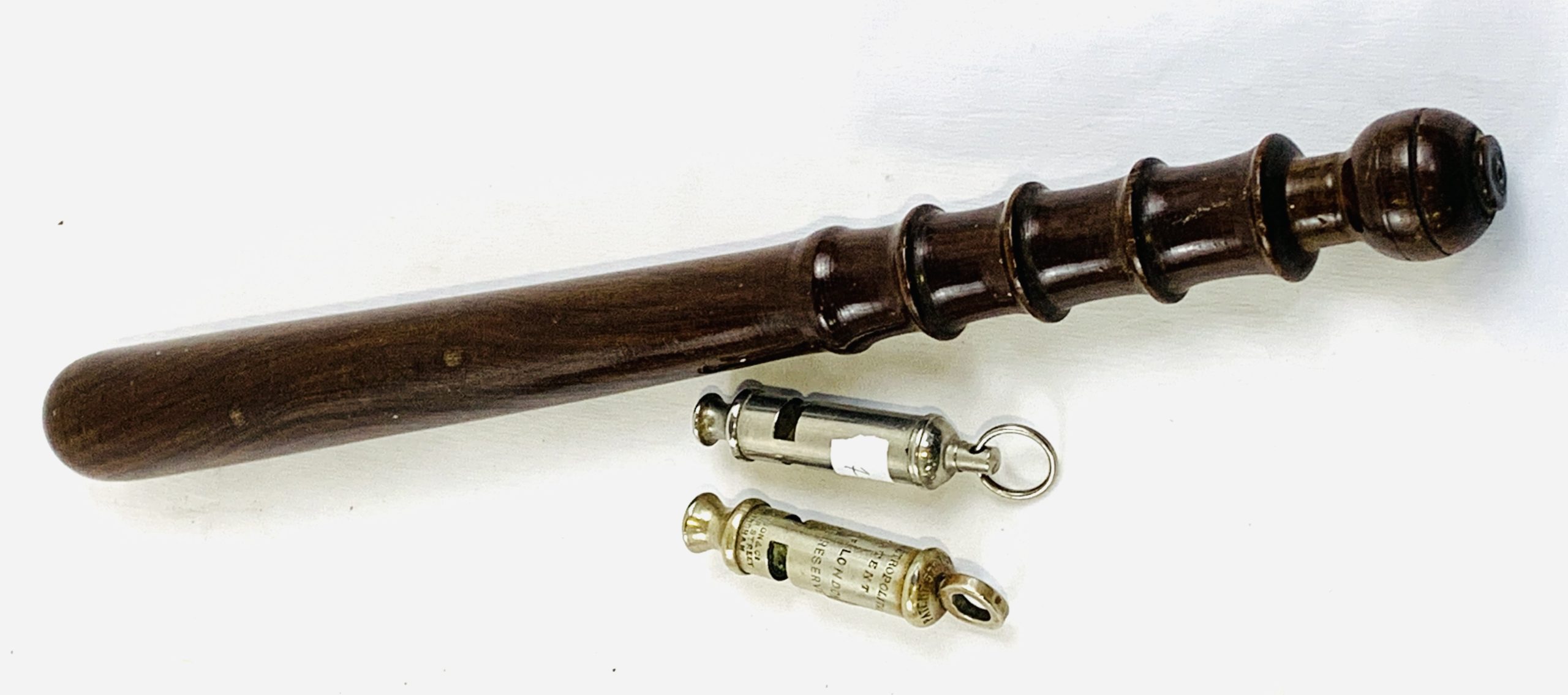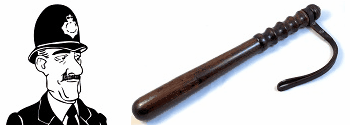The traditional police truncheon. The British police used the classic-design wooden truncheons for a very long time. They don’t use this traditional type any more. Not since the mid-1990s.
Before the days of handguns or stun guns, all police officers had to defend themselves with were wooden truncheons. The truncheon could be used to “strike, jab or block an attack”, according to David Cross, the curator at the West Midlands Police Museum.
He said: “Truncheons were weapons of defence not attack, they were there in case you had to quell anybody. Officers were trained to strike the back of the legs of someone they felt was a threat.”
First seen in Victorian times, the police back then used to use a rather long design of truncheon like the one on the far left below.

Over the years they got a little shorter but typically retained a similar design. The one in the centre above is typical of the design as it evolved. Early ones often didn’t feature the leather strap (lanyard). Later on, it became quite typical.
The Victorian original developed into several varieties. The typical truncheon is a straight stick usually made from wood approximately 1.25 inches (32 mm) in diameter at its widest point and 15–36 inches (380–910 mm) long, with a fluted or scalloped handle to aid grip.

Longer truncheons were often used in riot control and/or by mounted police.

There was never an absolute standard of design. Different forces procured their own truncheons from different manufacturers. Hiatt in Birmingham and Parkers of London were well-known manufacturers of them, but they were by no means the only ones.

The classic wooden police truncheon is probably the most well-known item when it comes to police accessories. Although not used any more, they are still sought after by collectors, people that want to keep a bit of history and people that just want one for their own reasons.
By the turn of the 20th century, police truncheons began to look more familiar and began to look like what we think of when we think of a wooden police truncheon.

That general design remained broadly the same through most of the twentieth century.
The one below is a Leeds City Police issue from the 1960s.

Until the mid-1990s, most police forces used wooden truncheons such as these. On 20 June 1994, Home Secretary Michael Howard authorised the use of batons. Long, rigid American-style batons were then introduced, first by the Metropolitan Police and then by other forces, but in many places, these were short-lived, as they were unwieldy in most operational circumstances. The police mostly then began to use the metal telescopic expanding batons in popular use today.
An original truncheon can be hard to track down. It’s not allowed to sell them on platforms such as eBay and Amazon without some very careful wording. Most get bought and sold via collectors, private antique dealers and auction houses.
Prices tend to start around £50 in an auction for a tatty one and go up to a few hundred pounds depending on rarity and provenance. In auctions, you’ll often have to pay admin or handling fees, VAT and sometimes usurious delivery costs on top.
If you want a traditional British police-style wooden truncheon, there is another option. We sell an exact replica of the 1960s Leeds City Police one you see above at a very reasonable price. Click the button below to find out more.

